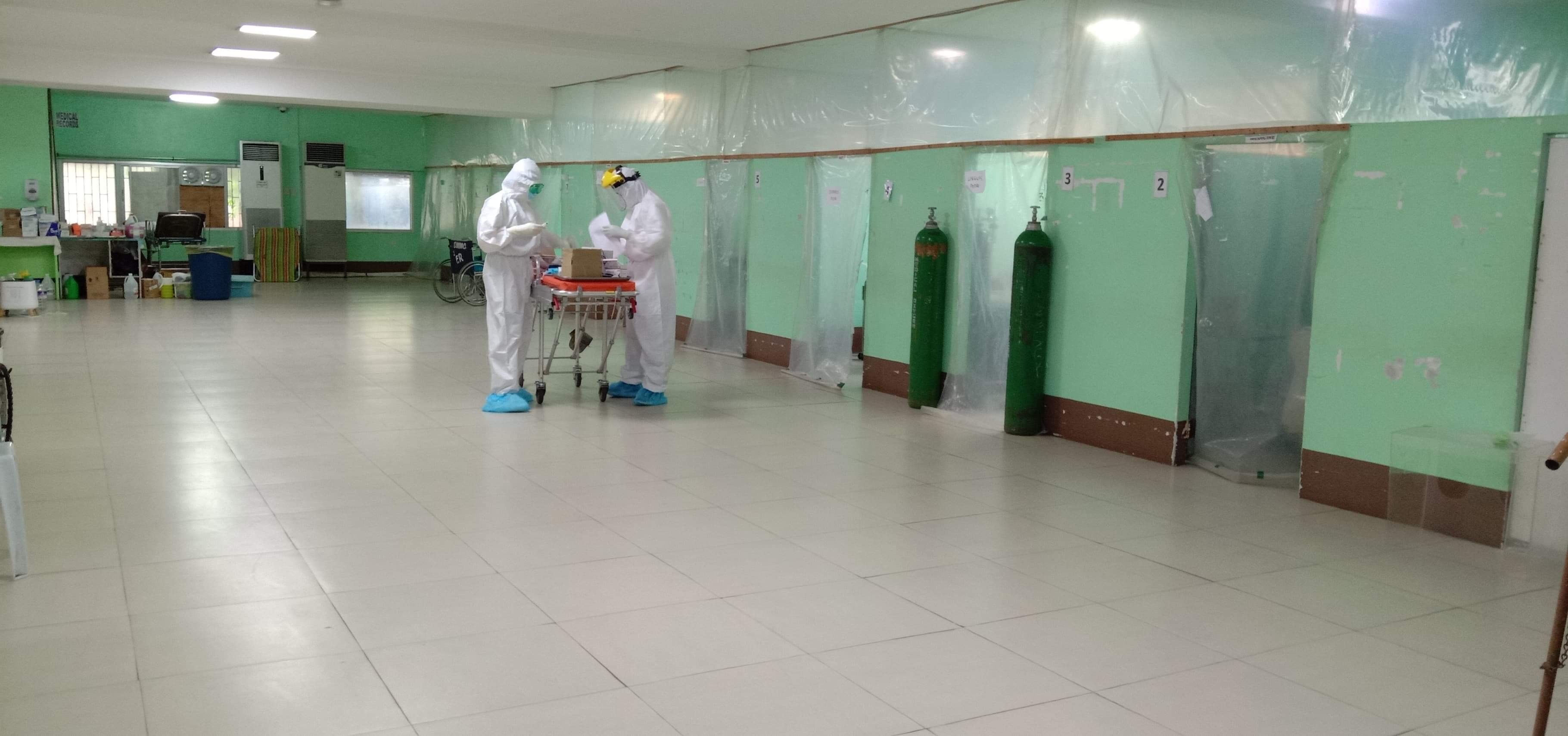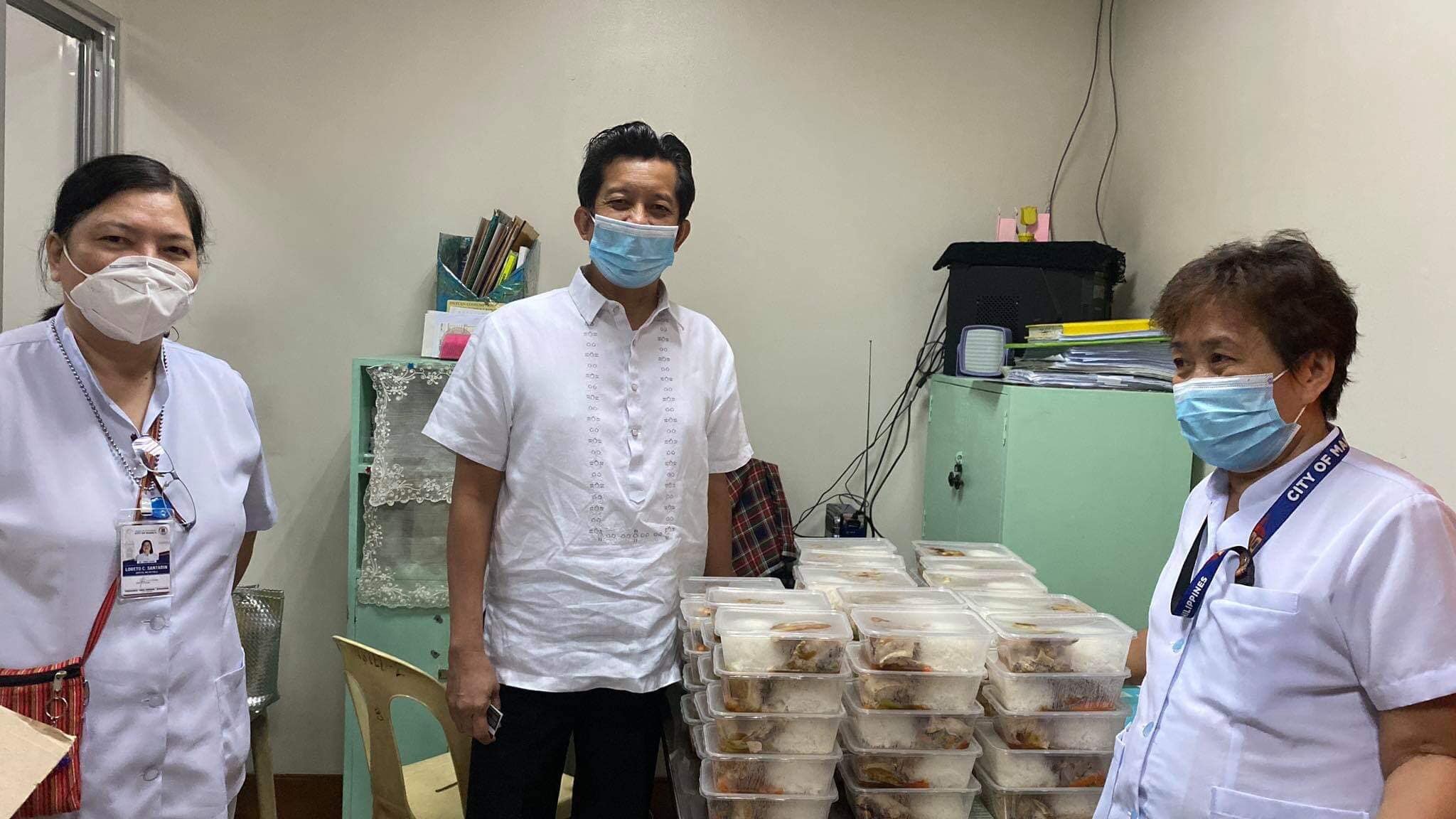The havoc caused by the COVID-19 global pandemic is like a modern-day apocalypse. The virus took the world by surprise.
People were asked to stay at home and directed to not mingle with one another. Cities were put on lockdown. People hoarded for supplies like there was no tomorrow, and uniform personnel deployed everywhere.
Not long after the outbreak in China, what we dreaded for the Philippines had begun. The first ever documented positive case in the Philippines was admitted at San Lazaro Hospital in Manila in January 2020. This undeniably caused fear not only in the country’s crowded capital city, but also alarmed the entire nation.
As of this day, the number of positive cases has become unstoppable as it continuously increases. The health sector can only ask one question, are we ready for this?

As early as March 2020, COVID-19 patients have started seeking medical attention at Ospital ng Maynila Medical Center. The situation has become overwhelming for me and the hospital staff at first but eventually, we are able to adjust to the situation as we continuously educate ourselves with the proper health practices. With a lot of modifications that have to be done to conform with the minimum safety standards set for this disease within a little amount of time, there’s not a minute to waste. We have hastily converted one of our specialty areas and the out-patient department to COVID wards. But this does not suffice. We still don’t have enough hospital beds to admit more incoming COVID-19 and suspected patients. We need to act fast. Isolation tents have been installed in our parking lots that serve as waiting area until they can be accommodated once there is vacancy in our COVID wards.
“ For us in the field of medicine, any loss is a failure to fulfill our oath of saving lives. To us, a lost life is a lost battle. ”
Despite the adversity, we must keep moving forward. To ensure the continuity in providing for the health care needs of our outpatients, medical departments have been tasked to create an online platform for them to conduct contactless consultation through telehealth. Our patients, especially the pregnant, senior citizens, and those with comorbidities, are strictly discouraged to go to the hospital to avoid exposure.
Ospital ng Maynila has already treated about 600 COVID-19 patients, that is aside from patients with other ailments such as stroke, Caesarian cases or appendicitis. We’ve had 266 COVID-19 and COVID-19 related admissions since March and 20 are still admitted as of this writing. There are 489 documented recoveries and 17 recorded deaths.
“ Our greatest struggle yet in the hospital is the spike in personnel-to-personnel transmission. Although already quite distressing, the uncontrolled transmissions have affected mostly doctors and nurses who interacted with COVID-19 patients. ”
It is truly fulfilling on our part as health practitioners to witness our patients’ recovery, from the time they are admitted until they are discharged and ready to face the world with much courage to share their inspiring stories of survival. However, not everyone is fortunate to find the strength to win. We are disheartened, and pained, too, knowing that some of our patients succumbed to this fatal illness. For us in the field of medicine, any loss is a failure to fulfill our oath of saving lives. To us, a lost life is a lost battle.
Another challenge is the limited capacity of our hospital to conduct confirmatory tests because we only rely on other laboratory centers contracted by the city. Swab specimens are on queue and the waiting time can take days and even weeks. Without results on hand, our clinical decision making is limited and stricter precautionary measures must be observed.
“ It is fair to say that our health care system is now at its most vulnerable point. ”
But our greatest struggle yet in the hospital is the spike in personnel-to-personnel transmission. Although already quite distressing, the uncontrolled transmissions have affected mostly doctors and nurses who interacted with COVID-19 patients. This leads to inadequate manpower to keep the hospital running.

The medical workers of Ospital ng Maynila Medical Center have shown courage and resilience through these trying times. But they are obviously experiencing not only physical and mental fatigue, but also emotional strain. Some of them go home to their families only once a month due to fear of transmitting the virus to their loved ones. Some, on the other hand, have encountered discrimination from non-medical workers when outside the hospital. They are exhausted, anxious and on the brink of giving up.
As days go by, positive cases continue to rise and hospitals deny admissions to patients after reaching their maximum patient capacity. When patients arrive in the hospital, they say that they’ve been to many hospitals that did not accept them. We feel their despair, but it is with a heavy heart that we are left with no choice but to do the same because we can no longer compromise what’s already been compromised. We have reached the point where COVID-19 positive and suspected cases are crammed in the isolation tents because there are no more rooms available. This is a health risk because transmission is at the highest in this setup. It is fair to say that our health care system is now at its most vulnerable point. I feel hopeless knowing that patients are out there, miserable and in pain. I ask myself, are we going to accept defeat? Without a doubt, the answer is no.
In late July 2020, it was agreed upon by Manila Mayor Francisco “Isko Moreno” Domagoso and hospital administrators that Ospital ng Maynila Medical Center would temporarily close its facilities to new patients for 10 days in hopes to make everything better. The time was used to formulate plans to improve our services and to uplift the morale of strained hospital staff. The time was also used to identify who were infected and those who needed to be quarantined. Hospital-wide disinfection was also executed during this time.

Although the hospital continuously catered to our in-patients, the reopening of the hospital after its 10-day closure provided a fresh start for us. Everyone seemed more enthusiastic and confident in performing their duties, not only as medical workers but as public servants. In fact, we are currently improvising the fourth level of the hospital as an extension of the COVID ward so we can care for more patients.
This whole COVID-19 experience is one that I will never forget and I am especially grateful to have served our fellowmen as hospital director of Ospital ng Maynila Medical Center.

We are grateful for the support of Mayor Isko Moreno and Vice Mayor Maria Shiela “Honey” Lacuna-Pangan. The local government, along with the administrators of city-owned hospitals, had set up plans even before the first patient was admitted. The City of Manila also recently launched a drive-thru testing services not only to the residents of Manila but to the neighboring cities alike. This is to easily identify the probable carriers in the hope of stopping the contagion. To top it all, the immense kindness and donations from private institutions and individual citizens are an invaluable aid to us. We are motivated knowing that they appreciate our role in this pandemic.
Experts across the globe are still finding a cure, though, the timeline cannot be identified. I am not able to tell when this will end, but I know that this is far from over. Better yet, let’s brace ourselves for what’s there is to come. I am positive that there is nothing that we cannot overcome as long as we work together.
Admittedly, our system is far from perfect. This virus is new to all of us and it’s like keeping a wide eye on a misty road searching for the right path, looking for answers. But one thing is for sure, everyone must take part in this war against our unseen enemy. This is not only a COVID-19 patient’s battle, nor it is of the health care workers alone, much more, our government. This is not a battle that can be won single-handedly, this is our battle.
Unity in adversity is what we need. Soon, hopefully, vaccines will be developed and COVID-19 will just be another treatable infectious disease. We are making history. At the end of it all, we will look back and appreciate what this global pandemic has taught us. It has made us realize our strengths and potentials, our weaknesses and vulnerabilities, and most importantly the value of life.

Why do we — doctors, nurses and healthcare providers — keep on going? Why do we keep on fighting? We may have different reasons but there is one that we all agree on: our sworn duty. To remain a member of the society, with special obligations to our fellow human, those of sound mind and body, as well as the infirm. Until we can no longer hold a stethoscope, we shall perform our duty to preserve life.
Edited by Büm Tenorio Jr.


